Today, School Chaplain Reverend Creed offers the community a reflection during this Advent season.

One of our most significant service learning projects at Ormiston each year is our Winter Warmth Appeal. Helping others less fortunate at this time of the year with food, drink and high quality clothes through Anglicare reflects our school motto, ‘Utilis in Ministerium’ (Useful in Service). This annual Early Learning 3 – Year 6 project is completed when our Ormiston community wear their pyjamas at a special assembly organised by Rev Helen Creed. The focus of this assembly is to emphasise our School Values of Respect, Integrity, Commitment, Hope and Courage while reminding our students that it is important to help others who need help in our community.
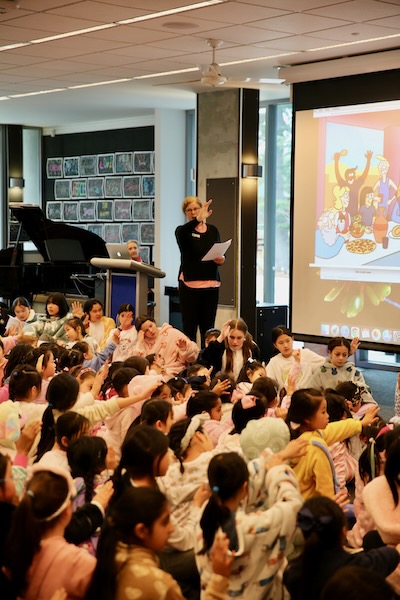


Well over half our Foundation – Year 6 student population attended last Friday’s Junior School Disco. It was terrific to see so many students and parents taking an active part in this annual school community event. There was lots of dancing on the night by students and staff including our Principal Mrs Dunwoody. The theme for the disco was Fluro and the Junior School Hall was decorated beautifully. I would like to thank Sarah Galati from our CGGS Foundation Office for her valuable work in planning and coordinating this event and the Parents and Friends Association (PFA) for their continued support of Ormiston activities. We look forward to more of these valuable events next year.
Paul Donohue
Head of Junior School
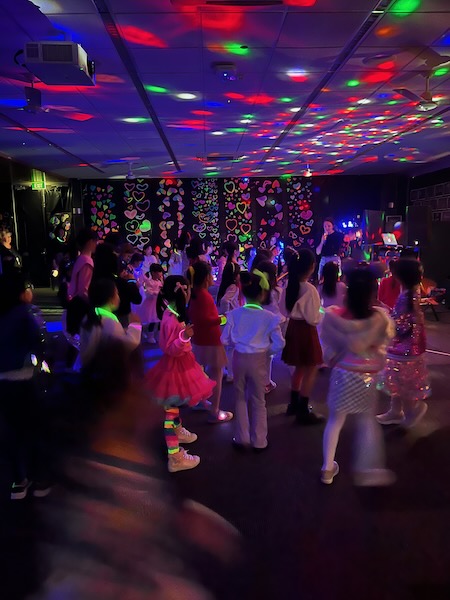







EL 3 have shown an increasing interest in exploring pattern, design and sequencing using loose parts and abstract objects. Throughout the term we have observed these loose parts wandering from one area to the next, as they have organically begun to embed their ideas and creative thinking into their play. Continuing to offer various materials such as; pebbles, small blocks, beads, mosaics and various other materials has encouraged the children to extend on their creative thinking and offer different ways to think deeper about how they can use the materials in their creative play. Loose parts have been integrated into our intentional teaching program through various lenses and the focus on creative thinking has been at the forefront of this exploration.
As we explored the inquiry question of “I spy with my little eye, what can you see in the night sky?” we drew on the importance of providing children with many ways of sharing their thinking around ‘the night sky’ and ‘sight’. The children were invited to use loose parts and beads, describing what they created as they went along. They were then encouraged to carefully thread, weave or spin the materials onto wire.
“It’s a shooting star. It happens when I’m sleeping. I want it to be a diamond. That’s the shape of a shooting star”. – Alison
“I’m making a telescope. That’s what you use to see into the night sky. I use a red telescope and look at the moon. I can see a red moon.” – Natasha
“I see the moon, Lots of moons. These are stars, like treasures in the sky. I turned it into a shooting star”. – Giselle
Following this experience, we set up a learning space for children to openly explore these tactile materials, noticing the continued emphasis on faces. Merging observational drawing and loose parts by creating our face has seen the children focus on the smaller details and unique features that make them who they are. This has naturally encouraged each child to verbally share what they see, and also what they feel when they see the expression on their face.
Jacqui Laird
Early Learning 3 Teacher




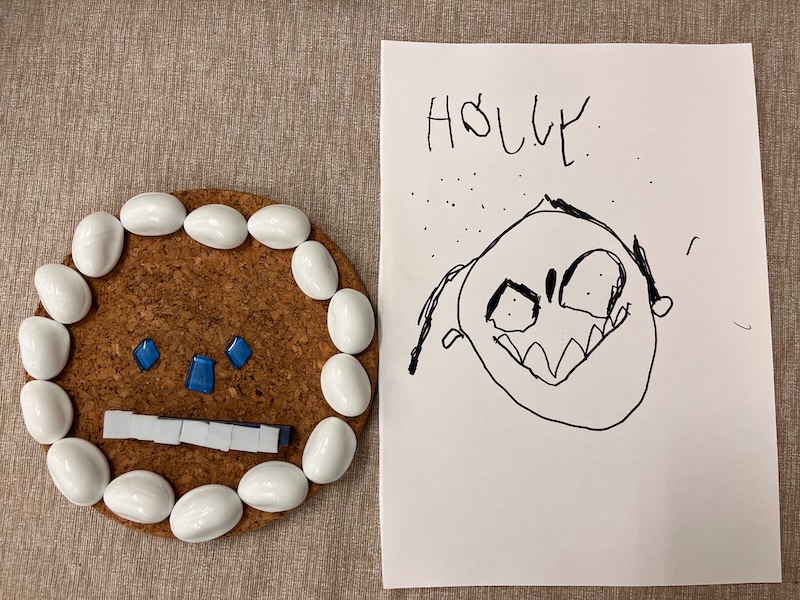

Reading and developing an appreciation of books, stories and narratives in the early years is a wonderful way of fostering a love for reading, imagination, and creativity in young minds. During Children’s Book Week, the ELC children, classroom and specialist teachers came together to introduce a diverse range of captivating stories, colourful illustrations, and interactive activities, in inspiration of the theme ‘Read Grow Inspire’. The enchanting world of children’s literature came alive as children were invited to dress up as their favourite characters for the parade, a spectrum of narratives led the children to become princesses, dragons, piranhas, mermaids, monsters, witches, famous icons, and so many more! This week’s events not only spark creativity and curiosity but lays the foundation for lifelong learning and a deep appreciation for the written language.
A huge thank you to Mrs Sally Spencer and Mrs Anne Devenish for organising the
Esther Wong
Early Learning 4 Teacher & Early Learning Coordinator
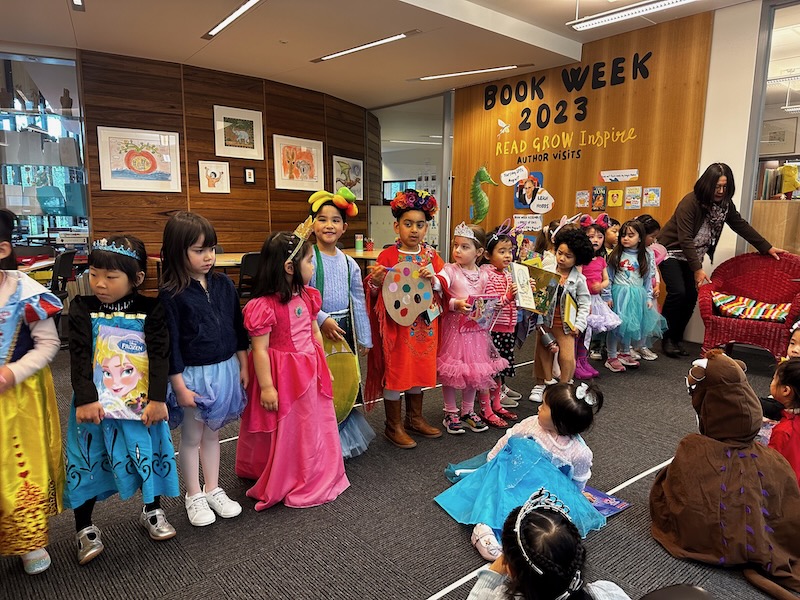





This year, CGGS once again hosted the Interschool Chess Tournament for Girls. This annual event was well-attended by many students from schools across Victoria. The schools were:
Methodist Ladies College
Balwyn Primary School
Mount View Primary School
Glendal Primary School
Ballarat Clarendon College
Rivercrest Christian College
Chairo Christian School
Over 70 students participated in the tournament and Camberwell Girls Grammar School was well represented on the day. This was the 18th year that Ormiston has held this All-Girls Chess Tournament. I would like to thank Chess Ideas who we partner with for supporting us to put on such a successful tournament each year. Congratulations to the following Ormiston students who participated in the tournament:
Madison A
Ajab Z
Aryana P
Ellie L
Cecilia Y
Sherise T
Serena H
Stephanie M
Here is a student reflection from two Year 5 students:
Student Reflection
We felt nervous because everyone wanted to win. The Chess tournament was also a little challenging for us but we tried our best to win. We enjoyed playing each game against students from other schools and we learnt a lot more about how to play Chess.
Sherise & Serena Year 5S
Paul Donohue
Head of Junior School



Yarning circles have been used by Aboriginal and Torres Strait Island people for centuries to share knowledge, stories and build respectful relationships. For First Nations people, the yarning circle was and still is an important place to conduct business, talk about issues in the community or on Country, and have a space where all voices are recognised and heard.
After watching a Junior Landcare video with information about the concept of a yarning circle and how it was and is still used today, the students investigated how being in a circle allows everyone to be seen and heard in a respectful way. We sat outside and observed everything around us, noticing how much we could see, smell and hear. By sitting outside we felt connected to the environment and were able to effectively communicate with each other.
When everybody sits in a circle it is quieter and everybody listens to each other. I noticed that people weren’t having as many private conversations. – Olive M
We could hear the teacher clearer and we can see each other better. – Amy S
When one person speaks everybody can hear and students use body language to listen. I feel it is more open. – Olivia L
I think we used more non-verbal communication. – Evangeline H
Following this introduction to yarning circles, we thought about possible places we could have a yarning circle at Ormiston and the pros and cons of each site. The Year 3 students also had many follow-up questions about the purpose of yarning circles and how they are created.
What materials and features should be used in a yarning circle? – Akira R
Why is it called a yarning circle? – Aryana P
What native plants should be used around a yarning circle? – Stephanie M
What is the best place for a yarning circle? – Cathy Z & Elsa L
During his latest visit to Ormiston, Murrundindi was able to answer all our questions and share significant information enhancing our understandings. He walked around the outside areas with us and explained they type of space that a yarning circle requires, and that safety needs to be considered.
I learnt that the person who is speaking in the yarning circle needs to hold a yarning stick. I found it interesting that the leader of the group must always face south. – Isabelle G
Something I found interesting is that when you leave the yarning circle you must walk around the outside – never through the circle. – Olivia D
I learnt that some schools have used logs as chairs and have a fire pit in the middle of their yarning circle. – Sofia R
Year 3 will now create yarning circle designs using knowledge learned from these sessions. We are looking forward to seeing their creative designs!
Liz Warren
Year 3 Classroom Teacher




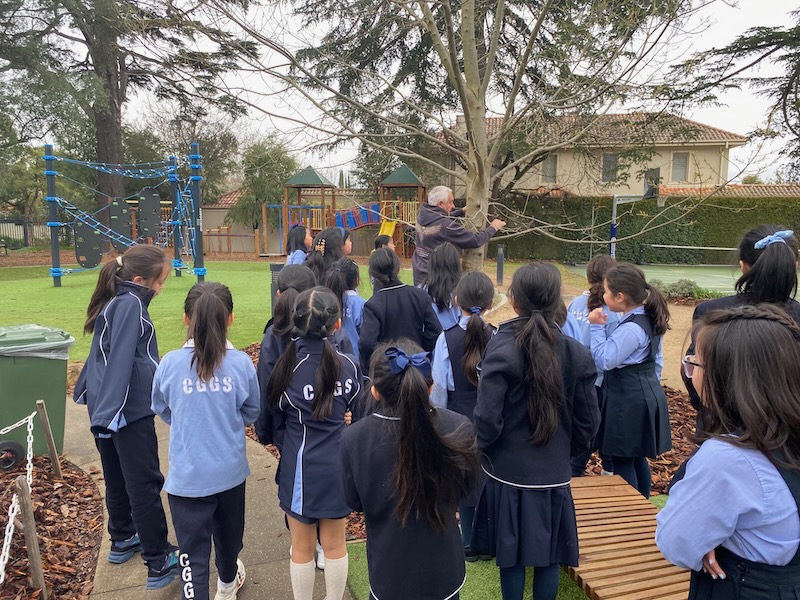

Today, School Chaplain Reverend Creed offers the community a reflection during this Advent season.
For our Year 6 students, their last few weeks at Junior School have been filled with celebrations!
The year has ended on a high note with the biggest event on the School’s calendar, Christmas at Camberwell, proving to be a huge success.

